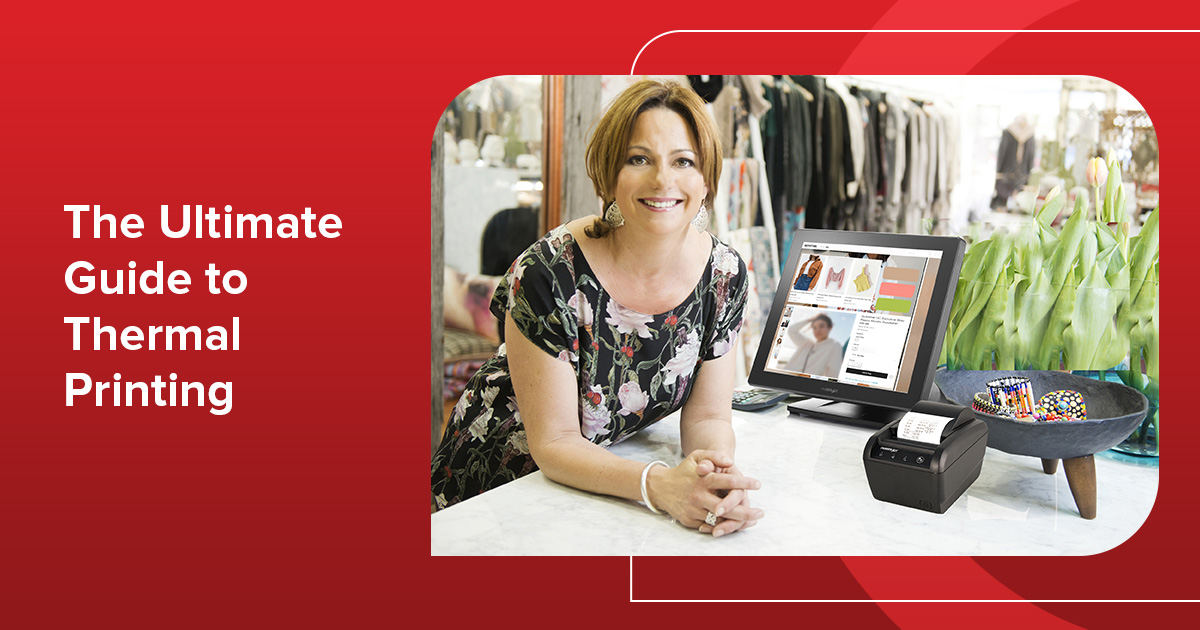Thermal Receipt Printer
Thermal receipt printers, distinguished by their use of a heated print head, offer unparalleled advantages compared to other printing technologies. We delve into the two main types: direct thermal and thermal transfer, explaining their functionalities and applications. Furthermore, we discuss the diverse range of thermal printer models catering to different needs and environments, including mobile, desktop, and industrial options. Pros and cons of thermal printers are weighed, highlighting their convenience, speed, and cost-efficiency while addressing limitations such as color restrictions.
Introduction To Thermal Printing
Thermal printing is a widely utilized technology that finds applications in various industries for producing high-quality printed output. It is a non-impact printing method that relies on heat transfer to create images and text on thermal paper or other compatible substrates. The process involves the controlled heat application to the thermal paper, causing a chemical reaction in the thermal coating that forms the desired print.
At its core, a thermal receipt printer operates through thermal printheads containing a series of tiny heating elements called resistors. These resistors are selectively heated in response to digital data from a computer or other input source. When a specific resistor is activated, it generates heat and raises the temperature of the adjacent thermal coating on the paper. The thermal layer typically consists of dyes or pigments that react to heat, resulting in a color change.
The areas of the thermal coating exposed to heat from the activated resistors darken, forming the desired print on the paper. By precisely controlling which resistors are activated and for how long, thermal receipt printers can create high-resolution prints with sharp text and graphics. As thermal printing does not rely on physical contact between the printhead and the paper, it offers several advantages, such as quiet operation, fast printing speeds, and minimal maintenance requirements.
Types Of Thermal Printing
When it comes to thermal receipt printers, there are two main types: direct thermal printing and thermal transfer printing. Both methods are crucial in point-of-sale (POS) systems, offering distinct advantages for applications.
Direct thermal printing is commonly used in billing POS machines to print receipts, tickets, and other temporary documents. This method involves heat-sensitive media that darken when exposed to the heated print head. It eliminates the need for ink, toner, or ribbons, making it a cost-effective option for high-volume printing. Direct thermal printing is known for its simplicity, speed, and ease of use, making it ideal for fast-paced retail environments.
On the other hand, thermal transfer printing offers enhanced durability and versatility for the POS complete system. This method utilizes a thermal transfer ribbon, which is melted onto the media using heat. It provides exceptional image quality, making it suitable for applications requiring high-resolution barcodes, product labels, or loyalty cards. Thermal transfer printing supports various media options, including paper, polyester, and plastic, allowing businesses to customize their prints for branding purposes.
When selecting a thermal receipt printer for a billing POS machine, it’s essential to consider the business’s specific requirements. Direct thermal printing offers cost savings and simplicity for basic receipt printing needs, while thermal transfer printing provides durability and versatility for applications requiring more robust and long-lasting prints.
Merits And Demerits Of Thermal Printing
Like any technology, a thermal receipt printer has merits and demerits that businesses should be considered when evaluating their suitability for their needs. They are:
Merits Of Thermal Printing
- Cost-effective: Thermal printers do not require ink, toner, or ribbons, resulting in lower ongoing expenses for supplies.
- Speed and efficiency: Thermal printers can produce prints rapidly, making them ideal for high-volume printing tasks, such as barcode labels or receipts.
- Durability: Thermal transfer printing offers excellent image quality and durability, ensuring that prints withstand harsh conditions, such as exposure to sunlight, moisture, or abrasion.
- Easy maintenance: Thermal printers are relatively easy to maintain, requiring fewer repairs and replacements than traditional printers.
- Quiet operation: Thermal printers operate quietly, making them suitable for environments where noise reduction is important, such as retail stores or healthcare settings.
Demerits Of Thermal Printing
- Limited color options: Most thermal printers are designed for monochrome printing, which can be a limitation for applications that require vibrant or multi-colored prints.
- Fading and sensitivity: Direct thermal prints are susceptible to fading, particularly when exposed to heat, light, or abrasion. They are also sensitive to environmental conditions, which can impact print quality.
- Special media requirements: Direct thermal printing necessitates using heat-sensitive media, which may be costlier or more challenging to source compared to standard printer paper.
- High upfront costs: Industrial-grade thermal printers or specialized models can come with a higher price tag, making the initial investment significant for some businesses.
Applications Of Thermal Printing
A Thermal receipt printer finds extensive applications in a POS complete system, offering numerous business advantages.
- Receipt Printing: Thermal printers excel in generating high-quality and fast receipts, ensuring smooth transaction processes at the point of sale. The speed and efficiency of thermal printing enable swift customer service, reducing waiting times and enhancing overall customer satisfaction via the billing POS machine.
- Barcode Labels: Thermal printers are widely utilized for printing barcode labels, essential for inventory management, pricing, and tracking products. Thermal printing ensures the clarity and accuracy of barcodes, facilitating efficient scanning and inventory control in retail environments.
- Loyalty Cards: Many businesses employ loyalty programs to reward and retain customers. Thermal printing enables the creation of customized loyalty cards with barcodes or QR codes, allowing seamless tracking of customer transactions and providing personalized offers.
- Product Labels: Thermal printing is instrumental in producing high-quality labels for products. Whether it’s price labels, product descriptions, or expiration dates, thermal printers offer durability and legibility, ensuring clear communication and enhancing brand representation.
- Ticketing Systems: Thermal printers are widely used in ticketing systems for various industries, including transportation, entertainment, and events. They efficiently produce tickets with precise information, barcodes, or QR codes, enabling swift access control and operational efficiency.
- Reports and Analytics: Thermal printers can also generate reports and analytics, providing businesses with tangible data on sales, inventory, and customer insights. This functionality aids in decision-making processes and facilitates efficient management of operations.
Posiflex Technology For Introducing Thermal Printing To Your Business
Thermal printing is a powerful technology that revolutionizes the efficiency and effectiveness of point-of-sale systems. Posiflex is a leading provider of innovative POS solutions, including state-of-the-art thermal receipt printers. Their website offers various thermal printing options suitable for multiple industries and Android POS machine prices, providing the tools to streamline your operations, improve customer experiences, and drive business success. Visit the Posiflex website today and unlock the full potential of your point-of-sale system!




